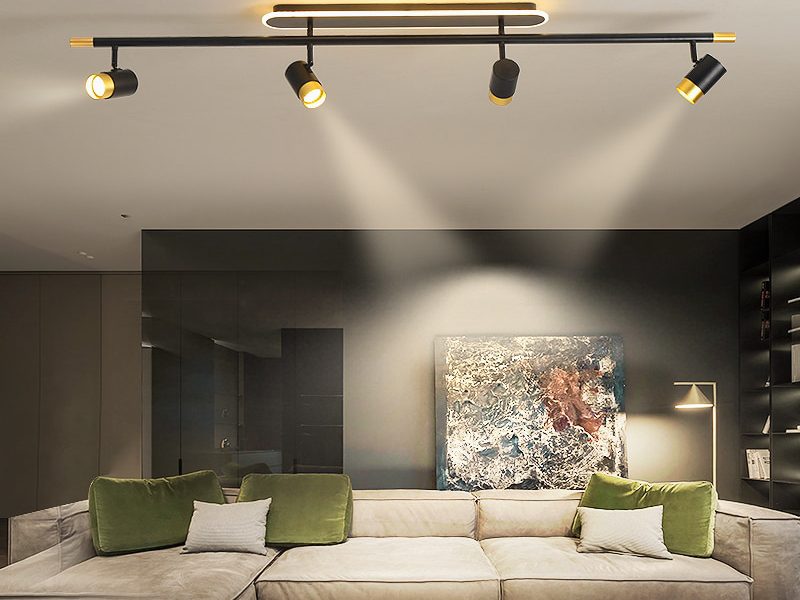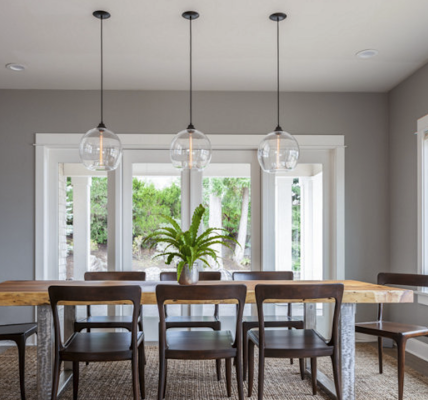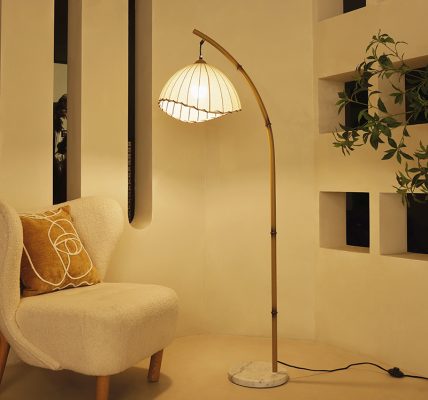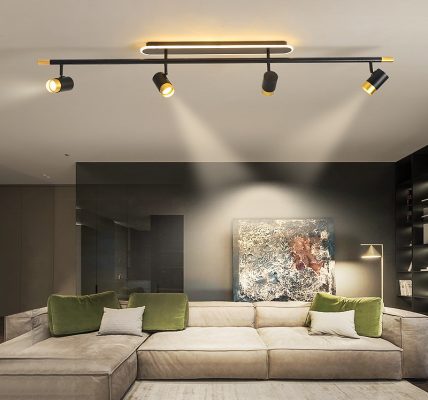Ambient lighting plays a crucial role in interior design, as it sets the overall mood and atmosphere of a space. It is the foundational layer of lighting that provides a general illumination to a room, creating a welcoming and comfortable environment. Without proper ambient lighting, a space can feel dull, uninviting, and lacking in character. In this article, we will explore the basics of vidilion ambient lighting in interior design, its impact on mood and productivity, how to choose the right fixtures for your space, the benefits of layering different types of lighting, and common mistakes to avoid when designing your ambient lighting plan.
Key Takeaways
- Ambient lighting is a fundamental aspect of interior design that sets the tone for a space.
- It plays a crucial role in creating a welcoming atmosphere that can positively impact mood and productivity.
- Choosing the right lighting fixtures and layering different types of lighting can enhance the overall effect.
- Highlighting interior design features with ambient lighting can add depth and dimension to a space.
- Color temperature and energy-efficient options are important considerations, as well as the use of dimmers to control the intensity of the lighting.
- Common mistakes to avoid include inadequate lighting, improper placement, and neglecting to consider the overall design aesthetic.
The Basics of Ambient Lighting in Interior Design
Ambient lighting, also known as general lighting, is the primary source of illumination in a room. It provides an overall level of brightness that allows people to move around safely and perform basic tasks. Ambient lighting should be evenly distributed throughout the space to eliminate shadows and create a balanced environment.
There are various types of fixtures that can be used for ambient lighting, including recessed lights, chandeliers, pendant lights, track lights, and wall sconces. Each type of fixture has its own unique characteristics and can be used to achieve different effects. For example, recessed lights are often used for a clean and minimalist look, while chandeliers can add elegance and drama to a space.
Placement of ambient lighting fixtures is also important in achieving the desired effect. The fixtures should be strategically placed to provide even illumination without causing glare or shadows. In larger spaces, multiple fixtures may be needed to ensure adequate coverage. It is also important to consider the height at which the fixtures are installed to avoid casting harsh shadows or creating an unbalanced look.
The Role of Ambient Lighting in Creating a Welcoming Atmosphere
Ambient lighting plays a crucial role in creating a welcoming atmosphere in any space. It sets the tone for the room and creates a sense of warmth and comfort. By providing a soft and diffused light, ambient lighting can make a space feel more inviting and cozy.
One example of a space that benefits from ambient lighting is the living room. This is often the central gathering place in a home, where family and friends come together to relax and socialize. By using ambient lighting fixtures such as recessed lights or a central chandelier, the living room can be transformed into a warm and inviting space. The soft glow of the ambient lighting creates a cozy atmosphere that encourages conversation and relaxation.
Another example is the bedroom, where ambient lighting is essential for creating a calm and peaceful environment. By using soft and warm lighting fixtures such as wall sconces or table lamps, the bedroom can become a sanctuary for rest and relaxation. The gentle illumination provided by ambient lighting helps to create a soothing atmosphere that promotes sleep and relaxation.
The Impact of Ambient Lighting on Mood and Productivity
| Metrics | Results |
|---|---|
| Increased ambient lighting | Improved mood and productivity |
| Decreased ambient lighting | Decreased mood and productivity |
| Optimal ambient lighting | Increased focus and alertness |
| Excessive ambient lighting | Increased stress and anxiety |
| Color temperature | Can affect mood and energy levels |
| Lighting design | Can impact overall well-being and satisfaction |
Ambient lighting has a significant impact on mood and productivity. The level of brightness in a space can affect our emotions, energy levels, and ability to focus. Brighter lighting tends to increase alertness and productivity, while softer lighting promotes relaxation and calmness.
The color temperature of ambient lighting also plays a role in mood and productivity. Color temperature refers to the warmth or coolness of light, measured in Kelvin (K). Warm light with lower color temperatures (around 2700K-3000K) creates a cozy and relaxing atmosphere, while cool light with higher color temperatures (around 5000K-6500K) promotes alertness and focus.
When choosing the right color temperature for your space, it is important to consider the function of the room. For example, in an office or study area where concentration is key, cooler light with higher color temperatures may be more suitable. On the other hand, in areas where relaxation is desired, such as the bedroom or living room, warmer light with lower color temperatures can create a more inviting and cozy atmosphere.
Choosing the Right Lighting Fixtures for Your Space
When choosing ambient lighting fixtures for your space, there are several factors to consider. First, you need to determine the size and layout of the room. Larger rooms may require multiple fixtures or larger fixtures to provide adequate coverage. It is also important to consider the ceiling height and the overall style of the space. The fixtures should complement the existing decor and enhance the overall aesthetic of the room.
There are various types of ambient lighting fixtures to choose from, depending on your personal preference and the style of your space. Recessed lights are a popular choice for ambient lighting as they provide a clean and minimalist look. They can be installed in the ceiling and provide a soft and diffused light that evenly illuminates the space.
Chandeliers are another popular choice for ambient lighting, especially in dining rooms or entryways. They add a touch of elegance and drama to a space and can become a focal point of the room. Pendant lights are also a versatile option for ambient lighting, as they come in various styles and can be used to create a statement or blend seamlessly with the existing decor.
The Benefits of Layering Different Types of Lighting

Layered lighting is an essential element in interior design, as it adds depth and dimension to a space. By combining different types of lighting, including ambient, task, and accent lighting, you can create a well-balanced and visually appealing environment.
Ambient lighting serves as the foundational layer of lighting in a layered lighting plan. It provides overall illumination to the space and sets the mood and atmosphere. Task lighting, on the other hand, is focused lighting that is used for specific tasks such as reading, cooking, or working. Accent lighting is used to highlight specific design features or objects in a room.
By incorporating ambient lighting into a layered lighting plan, you can create a versatile and functional space. The ambient lighting provides a general illumination that allows for safe movement and basic tasks, while task lighting provides focused lighting for specific activities. Accent lighting adds visual interest and can be used to highlight architectural features, artwork, or decorative objects.
How to Use Ambient Lighting to Highlight Your Interior Design Features
Ambient lighting can be used to highlight specific interior design features and create a focal point in a room. By strategically placing fixtures and adjusting the intensity of the light, you can draw attention to architectural details, artwork, or decorative objects.
One example of using ambient lighting to accentuate design elements is in a gallery or museum setting. By using track lights or recessed lights with adjustable heads, you can direct the light towards specific artworks or exhibits, creating a dramatic effect. The ambient lighting in this case serves as a backdrop that enhances the visual impact of the artwork.
In residential settings, ambient lighting can be used to highlight architectural features such as exposed beams, columns, or textured walls. By placing recessed lights or wall sconces near these features, you can create a play of light and shadow that adds depth and visual interest to the space.
The Importance of Color Temperature in Ambient Lighting
Color temperature is an important consideration when choosing ambient lighting for your space. It refers to the warmth or coolness of light and can have a significant impact on the mood and atmosphere of a room.
Warm light with lower color temperatures (around 2700K-3000K) creates a cozy and inviting atmosphere. It is often used in residential settings such as bedrooms, living rooms, and dining rooms where relaxation and comfort are desired. Warm light can make a space feel more intimate and welcoming.
Cool light with higher color temperatures (around 5000K-6500K) creates a bright and energetic atmosphere. It is often used in commercial settings such as offices, retail stores, and hospitals where alertness and productivity are important. Cool light can make a space feel more vibrant and lively.
When choosing the right color temperature for your space, it is important to consider the function of the room and the desired mood. In areas where relaxation is desired, such as the bedroom or living room, warmer light with lower color temperatures can create a more inviting and cozy atmosphere. In areas where concentration and productivity are key, such as the office or study area, cooler light with higher color temperatures may be more suitable.
Energy-Efficient Ambient Lighting Options for Your Home or Office
Energy efficiency is an important consideration when choosing ambient lighting fixtures for your home or office. Energy-efficient lighting not only helps to reduce energy consumption and lower utility bills but also has a positive impact on the environment.
There are various energy-efficient ambient lighting options available on the market today. LED (light-emitting diode) lights are one of the most popular choices for energy-efficient lighting. They use significantly less energy than traditional incandescent or fluorescent lights and have a longer lifespan.
LED lights are available in a wide range of color temperatures and can be dimmed to create different moods and atmospheres. They are also available in various styles and designs, making them suitable for any interior design aesthetic.
Another energy-efficient option for ambient lighting is compact fluorescent lights (CFLs). CFLs use less energy than incandescent lights and have a longer lifespan. They are available in different color temperatures and can be used in various fixtures such as recessed lights, chandeliers, and pendant lights.
The Role of Dimmers in Ambient Lighting Design
Dimmers play a crucial role in ambient lighting design as they allow you to control the intensity of the light and create different moods and atmospheres. By adjusting the brightness of the ambient lighting, you can create a cozy and intimate atmosphere or a bright and energetic environment.
Dimmers are available in various types, including rotary dimmers, slide dimmers, and touch dimmers. They can be installed on the wall or integrated into the lighting fixtures themselves. Some dimmers also come with programmable features that allow you to set different lighting scenes for different activities or times of the day.
By incorporating dimmers into your ambient lighting plan, you can have greater control over the lighting in your space. Dimmers allow you to adjust the brightness of the ambient lighting to suit your needs and preferences. They also help to reduce energy consumption and extend the lifespan of the light bulbs.
Common Mistakes to Avoid When Designing Your Ambient Lighting Plan
When designing your ambient lighting plan, there are several common mistakes that you should avoid. These mistakes can affect the overall look and feel of your space and compromise the functionality of the lighting.
One common mistake is using only one source of ambient lighting. This can result in uneven illumination and create shadows or dark spots in the room. It is important to use multiple fixtures or light sources to ensure even coverage and eliminate shadows.
Another mistake is using fixtures that are too bright or too dim for the space. Fixtures that are too bright can cause glare and discomfort, while fixtures that are too dim may not provide adequate illumination. It is important to choose fixtures with the right brightness level for the size and function of the room.
Placement of fixtures is also important in achieving the desired effect. Fixtures that are placed too high or too low can create unbalanced lighting or cast harsh shadows. It is important to consider the height at which the fixtures are installed and ensure that they provide even illumination without causing glare or shadows.
In conclusion, ambient lighting plays a crucial role in interior design as it sets the overall mood and atmosphere of a space. It provides a general illumination that creates a welcoming and comfortable environment. By choosing the right fixtures, considering the color temperature, and incorporating dimmers, you can create a well-balanced and visually appealing lighting plan. By avoiding common mistakes and considering the function of the room, you can ensure that your ambient lighting plan enhances the overall aesthetic and functionality of your space.











